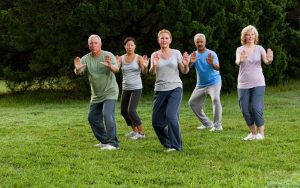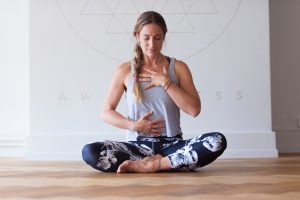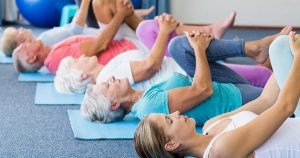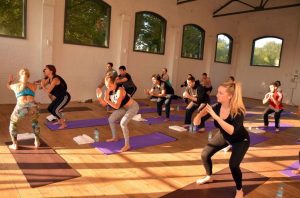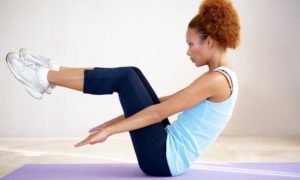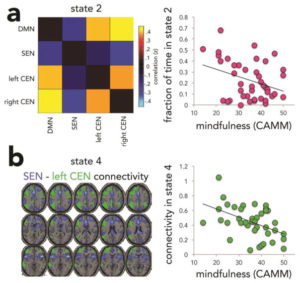
Improve Physical and Mental Well-Being in the Elderly with Yoga
By John M. de Castro, Ph.D.
“Yoga is incredible for an older population to help them maintain their balance, keep their joints flexible, maintain bone health and muscle mass, as well as learn how to cope with their mental state as they witness their bodies aging. Yoga is great for focus, concentration, and emotional wellbeing. Seniors can benefit tremendously from the practice and it gives them a place to quiet their mind and start to slow down in life.” – Kristin McGee
We celebrate the increasing longevity of the population. But aging is a mixed blessing. The aging process involves a systematic progressive decline of the body and the brain. Every system in the body deteriorates including motor function with a decline in strength, flexibility, and balance. It is inevitable. In addition, many elderly experience withdrawal and isolation from social interactions and depression. There is some hope as there is evidence that these declines can be slowed. For example, a healthy diet and a regular program of exercise can slow the physical decline of the body with aging. Also, contemplative practices such as meditation, yoga, and tai chi or qigong have all been shown to be beneficial in slowing or delaying physical and mental decline.
Yoga practice has been shown to have a myriad of benefits for psychological and physical health. It is both an exercise and a mind-body practice that stresses both mental attention to present moment movements, breath control, and flexibility, range of motion, and balance. It has been shown to improve balance and flexibility in older individuals. It is safe and can be practiced by anyone from children to seniors. Recently, there have been a number of high profile athletes who have adopted a yoga practice to improve their athletic performance. But it is not known whether yoga practice is as good as traditional exercise programs in improving the overall functional fitness of sedentary older adults and slow the age related physical decline.
In today’s Research News article “The effects of yoga compared to active and inactive controls on physical function and health related quality of life in older adults- systematic review and meta-analysis of randomised controlled trials.” (See summary below or view the full text of the study at: https://www.ncbi.nlm.nih.gov/pmc/articles/PMC6451238/), Sivaramakrishnan and colleagues review, summarize, and perform a meta-analysis of the effectiveness of yoga practice for the well-being of aging individuals. They identified 22 randomized controlled trials of yoga practice effects on the physical function and health related quality of life in older (> 60 years) individuals.
They report that the research literature found that yoga practice in comparison to both active and inactive controls produced significant improvements in physical function including lower limb strength and lower body flexibility. In comparison to inactive controls yoga practice also produced a significant improvement in balance. Additionally, they report that yoga practice in comparison to both active and inactive controls produced significant improvement in depression levels. In comparison to inactive controls yoga practice also produced significant improvements in perceived mental health, perceived physical health, sleep quality, and vitality.
In looking at the research findings in general, it appears that yoga practice has significant benefits for older adults for physical and mental health. The benefits appear the greatest when yoga practice is compared to no activity, but are still present but to a lesser extent when compared to individuals practicing other activities such as walking, Tai Chi, or stretching exercises. Hence, it appears that many of the benefits of yoga practice are due to the exercise provided by yoga rather than the mind-body components of the practice.
But yoga practice still has some important benefits in comparison to older individuals engaging in other activities. These benefits would appear to be independent of the exercise and are likely due to the contemplative practice provided by yoga. The antidepressant effects are particularly important as depression is a major problem for the elderly. The improvements in strength and flexibility are also important as these physical abilities deteriorate with aging and contribute to musculoskeletal problems.
The current research literature findings, the, suggest that yoga may be an excellent practice for the slowing of age-related decline. It would appear to be superior to many other activities and should be routinely recommended for physical and mental health of the elderly.
So, improve physical and mental well-being in the elderly with Yoga.
“The research on yoga is preliminary, however, initial studies have found a yoga practice to positively correlate with both physical and mental wellness. It’s uncontroversial that yoga can improve strength, flexibility, and endurance, but studies have also found that regular practice may help: Lower the risk of cardiovascular disease, Recovery from strokes and surgery, prevent falls, manage arthritis, pain and inflammation, manage diabetes, manage digestive issues like IBS, improve sleep quality, facilitate the grieving process, and manage depression and anxiety.” – Yoga for Seniors
CMCS – Center for Mindfulness and Contemplative Studies
This and other Contemplative Studies posts are also available on Google+ https://plus.google.com/106784388191201299496/posts and on Twitter @MindfulResearch
Study Summary
Sivaramakrishnan, D., Fitzsimons, C., Kelly, P., Ludwig, K., Mutrie, N., Saunders, D. H., & Baker, G. (2019). The effects of yoga compared to active and inactive controls on physical function and health related quality of life in older adults- systematic review and meta-analysis of randomised controlled trials. The international journal of behavioral nutrition and physical activity, 16(1), 33. doi:10.1186/s12966-019-0789-2
Abstract
Background
Yoga has been recommended as a muscle strengthening and balance activity in national and global physical activity guidelines. However, the evidence base establishing the effectiveness of yoga in improving physical function and health related quality of life (HRQoL) in an older adult population not recruited on the basis of any specific disease or condition, has not been systematically reviewed. The objective of this study was to synthesise existing evidence on the effects of yoga on physical function and HRQoL in older adults not characterised by any specific clinical condition.
Methods
The following databases were systematically searched in September 2017: MEDLINE, PsycInfo, CINAHL Plus, Scopus, Web of Science, Cochrane Library, EMBASE, SPORTDiscus, AMED and ProQuest Dissertations & Theses Global. Study inclusion criteria: Older adult participants with mean age of 60 years and above, not recruited on the basis of any specific disease or condition; yoga intervention compared with inactive controls (example: wait-list control, education booklets) or active controls (example: walking, chair aerobics); physical function and HRQoL outcomes; and randomised/cluster randomised controlled trials published in English. A vote counting analysis and meta-analysis with standardised effect sizes (Hedges’ g) computed using random effects models were conducted.
Results
A total of 27 records from 22 RCTs were included (17 RCTs assessed physical function and 20 assessed HRQoL). The meta-analysis revealed significant effects (5% level of significance) favouring the yoga group for the following physical function outcomes compared with inactive controls: balance (effect size (ES) = 0.7), lower body flexibility (ES = 0.5), lower limb strength (ES = 0.45); compared with active controls: lower limb strength (ES = 0.49), lower body flexibility (ES = 0.28). For HRQoL, significant effects favouring yoga were found compared to inactive controls for: depression (ES = 0.64), perceived mental health (ES = 0.6), perceived physical health (ES = 0.61), sleep quality (ES = 0.65), and vitality (ES = 0.31); compared to active controls: depression (ES = 0.54).
Conclusion
This review is the first to compare the effects of yoga with active and inactive controls in older adults not characterised by a specific clinical condition. Results indicate that yoga interventions improve multiple physical function and HRQoL outcomes in this population compared to both control conditions. This study provides robust evidence for promoting yoga in physical activity guidelines for older adults as a multimodal activity that improves aspects of fitness like strength, balance and flexibility, as well as mental wellbeing.
https://www.ncbi.nlm.nih.gov/pmc/articles/PMC6451238/

